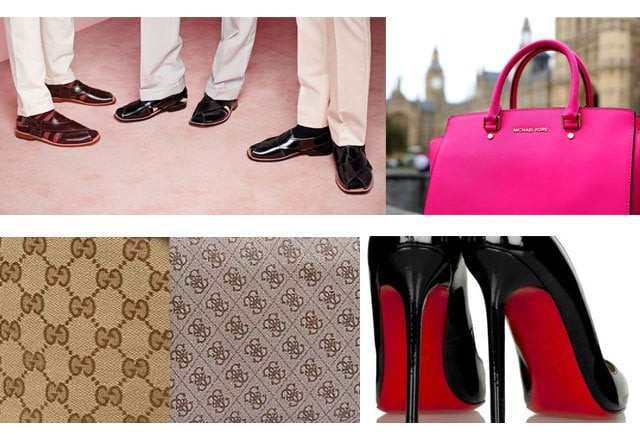Sartorial crimes: 5 biggest plagiarism acts of all time
As we arrive to another creative year in the realms of fashion, copycats continue to be riddled in the long history

As we arrive to another creative year in the realms of fashion, copycats continue to be riddled in the long history.
PHOTO: FILE
As we recall some acts of plagiarism by the giants of the fashion world, here are the top five controversies of all time.
PAUL SMITH vs. PESHAWARI CHAPPAL

In 2014, British designer sparked mixed emotions when he came out with his version of Peshawari chappals named Robert. The sandals priced $500 didn’t acknowledge the origin. It is considered to be one of Pakistan’s national identities. The lack of identification and cultural misappropriation prompted complains on the social media leading to the online petitions that were addressed to the UK Prime Minister David Cameron. A lot of petitioners mutually consented on the fact that the design was not ‘stolen’, instead was just an inspiration. They just wanted acknowledgment, as crediting the inspired fashion shows signs of respect. As a result, the name Robert was dropped and “inspired by the Peshawari chappal” was added in the shoe’s description, reported Dailymail.
YSL vs. CHRISTIAN LOUBOUTIN

Yves Saint Laurent first sued the French label Christian Louboutin in April 2011. YSL alleged the label of copying its signature red soles. In September 2012, a New York Appeals Court said that the red soles of Louboutin were entitled to trademark protection, allowing YSL to make red soles only if the shoe is red itself. But since YSL’s shoes in question were entirely red, from soles to uppers, the Court of Appeals ruled for it and has dismissed Louboutin’s claims. However, in October 2012, YSL voluntarily dismissed its lawsuit against the footwear label and decided to refocus its energies on its business and its creative designs, reported Vogue.
GUCCI vs. GUESS

In 2012, Gucci lost a four-year legal battle against Guess over the interlocking ‘G’ pattern. The former brand first filed its lawsuit in 2009 over the allegations that the latter copied its logo on a line of shoes. It was filed both in New York and Milan. It accused Guess of counterfeiting, unfair competition and trademark infringement. The New York’s court ruled for Gucci and around $4.5 million were paid as compensation for the damages. On the other hand, the Milan court ruled against it. It ordered the cancellation of most of the claims of Gucci’s Italian pattern trademarks — including the ‘G’ stamp. It declared that Guess logo is different from the interlocking double G logo, reported Vogue.
GIORGIO ARMANI vs. DOLCE & GABBANA

Italian designer Giorgio Armani claimed that Stefano Gabbana and his partner, Domenico Dolce, had plagiarised one of his designs for a pair of trousers in 2009. Corriere della Sera newspaper quoted Armani as saying, “They copied some trousers from the last [Armani] collection.” He accused them of using the design under suspicion, 16 times. “I would understand if they were nobodies. But honestly!” he said. However, Dolce & Gabbana denied the allegations saying, “Surely we still have much to learn, but definitely not from him. Stylistically, the Armani style is not, and has never been, an inspiration source for us and we stopped seeing his fashion shows years ago,” reported The Guardian.
ROBERTO CAVALLI vs. MICHAEL KORS

In 2013, Italian designer Roberto Cavalli slammed Michael Kors for copying his designs. In an interview with Style.com, he called him “one of the biggest copy designers in the world.” Later in 2014, he accused him again in Miami’s Haute Living. He said, “Now you have designers and you have Zara, which is meant to be fast and sold at a very cheap price, so you expect [copying]. But Michael Kors, he copies everything. It’s really a scandal and nobody has the courage to say anything. It’s really not fair.” Despite these allegations, Cavalli failed to explain which of his collections have been plagiarised, neither did Michael Kors comment on it, reported Dailymail.
Published in The Express Tribune, June 3rd, 2015.
Like Life & Style on Facebook, follow @ETLifeandStyle on Twitter for the latest in fashion, gossip and entertainment.



















COMMENTS
Comments are moderated and generally will be posted if they are on-topic and not abusive.
For more information, please see our Comments FAQ